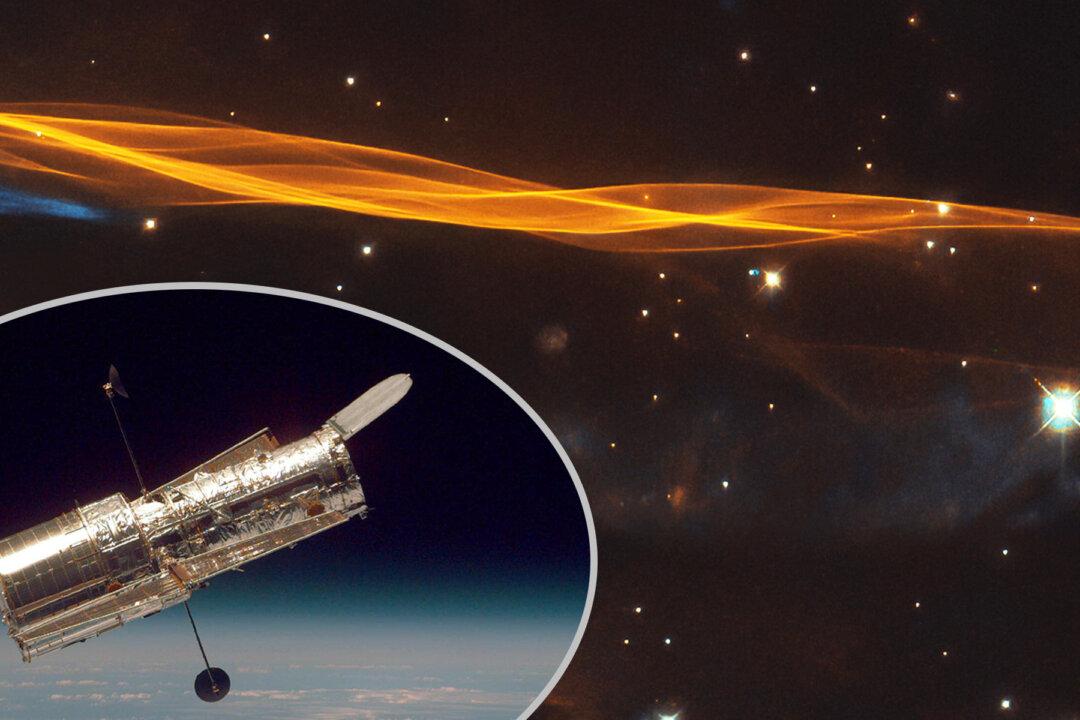NASA’s Hubble Space Telescope has captured the breathtaking spectacle of “veil-like” ribbons ripping through space at incredible speeds—the wake of a supernova blast that would have been visible to humans on Earth some 15,000 years ago.
The spectacular blast wave, known as the Cygnus Loop, emanated from a massive dying star, and it continues to hurl through space to this day.





